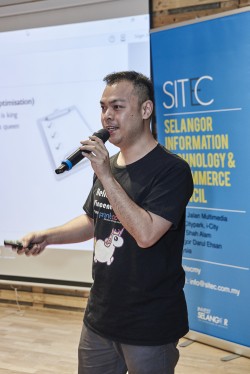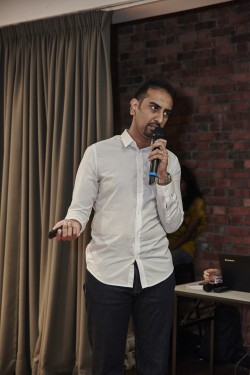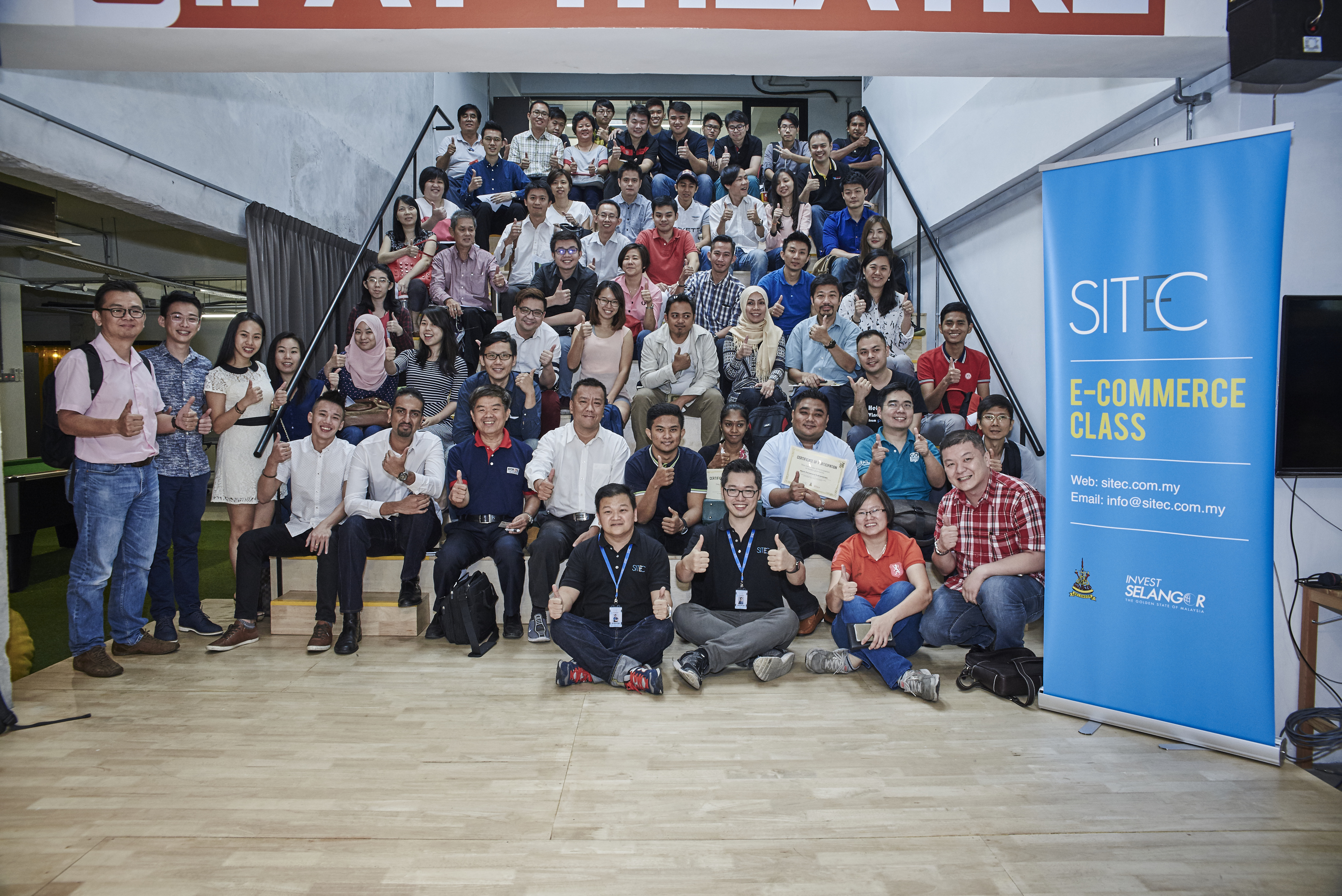The E-Commerce Class for April 26th, 2016, was an English language class on product and content management, which had invited the winner, as well as two finalists from the Top E-Commerce Merchant Awards 2016 to speak to the attendees, which had numbered over 90.
The first speaker was Kay Gan, co-founder of Sally Fashion, the Winner of the Top E-Commerce Merchant Awards. As a bit of background, Gan used to work at his father’s mobile phone shop. However, he wanted to run his own business, and turned to women’s apparel when co-founder and brother Gan Chin Hock, who was already selling women’s apparel then, suggested he do the same.
Gan, who got his supplies from China, took almost 3 months, working day and night, to optimise his site. Not long after, when Hock offered a merger for the brothers to play to their strengths, Gan agreed. However, the merger brought along its own set of problems, namely that they had a high amount of products, where it was not feasible to edit images and descriptions one by one, not to mention uploading to their site and social media channels, as it would be too time-consuming to do manually.
“PCM is a technology, as well as a process. It is not easy to do, and requires a certain skillset. There is also no single off-the-shelf system that can work for all businesses, and you need to tailor the system to your business,” said Gan, who offered little tips and tricks to attendees, stating examples in his own experience such as combining products from the same supplier under a certain category, and stressing that product accuracy is important in a large catalogue.
Gan then revealed how Sally Fashion resolved their PCM issues, through the use of automation, utilising a system created by Hock that handles all of the management automatically. This was crafted using PHP code, and uses Javascript to upload, and had started off as an open source e-commerce system, which the brothers had tweaked and customised to suit their needs.

“There are only two steps to organic search engine optimisation. You have to research the keywords searched, and find a way to place those keywords on your website,” said Tong.
One example would be using one keyword as a root keyword, and generating more keywords from there, and gradually progressing to more complicated keywords that remain associated to the service or product offered. Merchants were advised to find means of placing those keywords on their website, as well as stay up to date on the rate of keyword searches.
Tong (left) noted that other places where the keywords should be located included the url of the website, and reminded merchants to always rename their images with the right keywords.
Tong then explained the use of the title tag and the meta description tag, where company names tend to be placed, and told the attendees that there is no point in placing the company name there, when placing the keywords for products and services would help with organic search engine optimisation.
Tong then stressed the importance of constant updates, and suggested blogger 
However, Tong also cautioned merchants against black hat and link building methods, which he notes are “dirty” ways of growing SEO, and are not sustainable.
The third speaker, who spoke about proper content management, was Rupinder Singh (left), operations manager for i-Pmart, also a Finalist of the Top E-Commerce Merchant Awards.
“Content management can create leads, influence buying decisions, and foster loyalty, but has to be able to reach out to customers and keep customers on your site,” said Rupinder.
Rupinder then utilised case studies from i-Pmart as examples for the attendees, noting why something was done over something not done, such as removing watermarks on images, highlighting unique selling points, being specific about important information, and not hard-selling.
The 100-strong crowd that attended the class
Also stressed was the importance of staying up to date on the inventory as well as the pricing of said inventory, as was the importance of reacting to current trends and engaging customers for feedback.
All in all, the general view conveyed about product and content management by the three speakers was that it is an integral part of e-commerce, whether the offerings are services or products, and that it was something that has to be tailored to each specific merchant.

